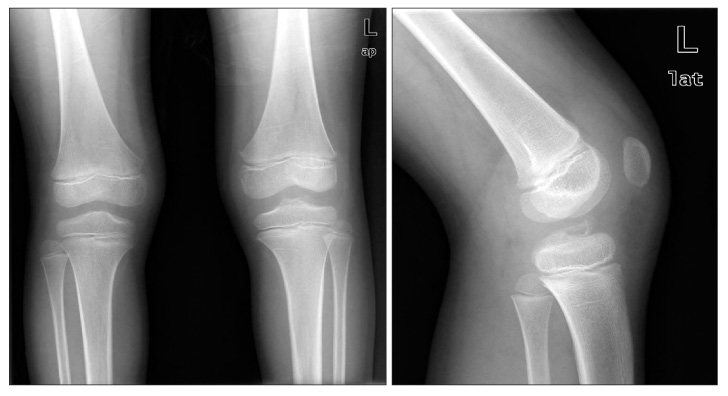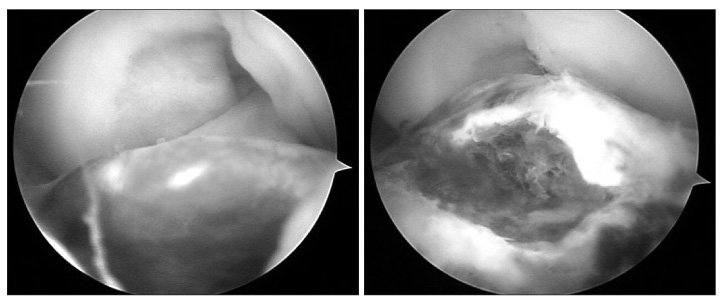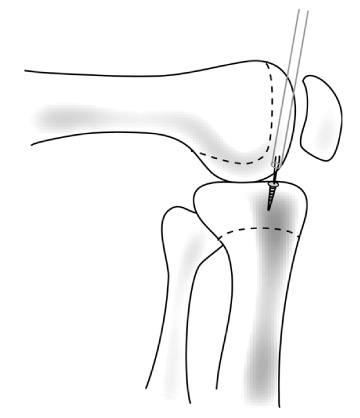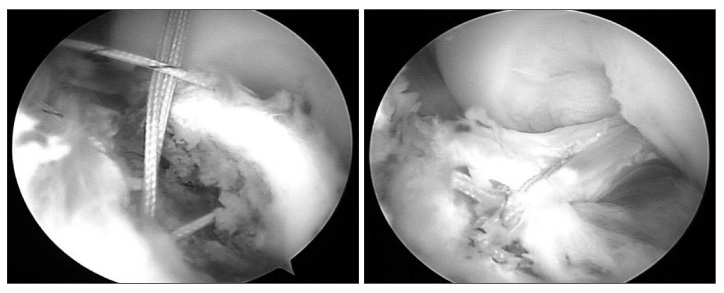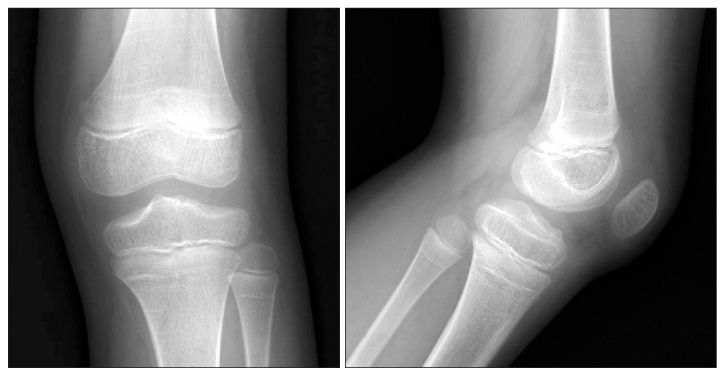J Korean Orthop Assoc.
2011 Dec;46(6):512-517.
Arthroscopic Bio-Absorbable Suture Anchor Fixation of Tibial Eminence Avulsion Fracture in Children
- Affiliations
-
- 1Department of Orthopaedic Surgery, College of Medicine, Chungbuk National University, Cheongju, Korea. oslion@chungbuk.ac.kr
Abstract
- Surgical treatment for the pediatric anterior cruciate ligament (ACL) avulsion fracture consists of arthroscopic treatment and open surgery. Recently, arthroscopic treatment has been commonly performed rather than open surgery because of less post-operative pain and faster rehabilitation. In arthroscopic treatment, K-wire and cannulated cancellous screws are the main instruments used for fixation of avulsion fracture, but these instruments have the risk of causing damage to the growth plate and an additional surgery to remove the fixation is needed. In spite of the technical difficulty, the suture anchor is used to overcome the risk of damage to the growth plate and the need for an additional surgery. The authors report good results using bio-absorbable suture anchor in arthroscopic treatment for pediatric ACL avulsion fracture.
MeSH Terms
Figure
Reference
-
1. Wiley JJ, Baxter MP. Tibial spine fractures in children. Clin Orthop Relat Res. 1990. (255):54–60.
Article2. Ahn JH, Yoo JC. Clinical outcome of arthroscopic reduction and suture for displaced acute and chronic tibial spine fractures. Knee Surg Sports Traumatol Arthrosc. 2005. 13:116–121.
Article3. Uggen C, Wei A, Glousman RE, et al. Biomechanical comparison of knotless anchor repair versus simple suture repair for type II SLAP lesions. Arthroscopy. 2009. 25:1085–1092.
Article4. Seon JK, Park SJ, Lee KB, et al. A clinical comparison of screw and suture fixation of anterior cruciate ligament tibial avulsion fractures. Am J Sports Med. 2009. 37:2334–2339.
Article5. Meyers MH, McKeever FM. Fracture of the intercondylar eminence of the tibia. J Bone Joint Surg Am. 1970. 52:1677–1684.
Article6. McLennan JG. The role of arthroscopic surgery in the treatment of fractures of the intercondylar eminence of the tibia. J Bone Joint Surg Br. 1982. 64:477–480.
Article7. Veselko M, Senekovic V, Tonin M. Simple and safe arthroscopic placement and removal of cannulated screw and washer for fixation of tibial avulsion fracture of the anterior cruciate ligament. Arthroscopy. 1996. 12:259–262.
Article8. Tsukada H, Ishibashi Y, Tsuda E, Hiraga Y, Toh S. A biomechanical comparison of repair techniques for anterior cruciate ligament tibial avulsion fracture under cyclic loading. Arthroscopy. 2005. 21:1197–1201.
Article9. Bong MR, Romero A, Kubiak E, et al. Suture versus screw fixation of displaced tibial eminence fractures: a biomechanical comparison. Arthroscopy. 2005. 21:1172–1176.
Article10. Kim JM, Kim YS, Ha KY, Cho HM. Arthroscopic stabilization for traumatic anterior dislocation of the shoulder: suture anchor fixation versus transglenoid technique. J Orthop Sci. 2008. 13:318–323.
Article
- Full Text Links
- Actions
-
Cited
- CITED
-
- Close
- Share
- Similar articles
-
- Treatment of Fracture of the Tibial Intercondylar Eminence with Arthroscopic Pull-Out Suture
- Osteolysis-Related Bioabsorbable Suture Anchor Fixation in a Medial Collateral Ligament Avulsion Fracture during Total Knee Arthroplasty
- Arthroscopic Assisted Management For the Fracture Of the Tibial Intercondylar eminence Using Tension Band Technique
- Treatment Using Arthroscopic Reduction and Fixation in Tibial Intercondylar Eminence Fracture
- Arthroscopic Internal Fixation of Displaced Tibial EminenceFracture Using Cannulated Screw

